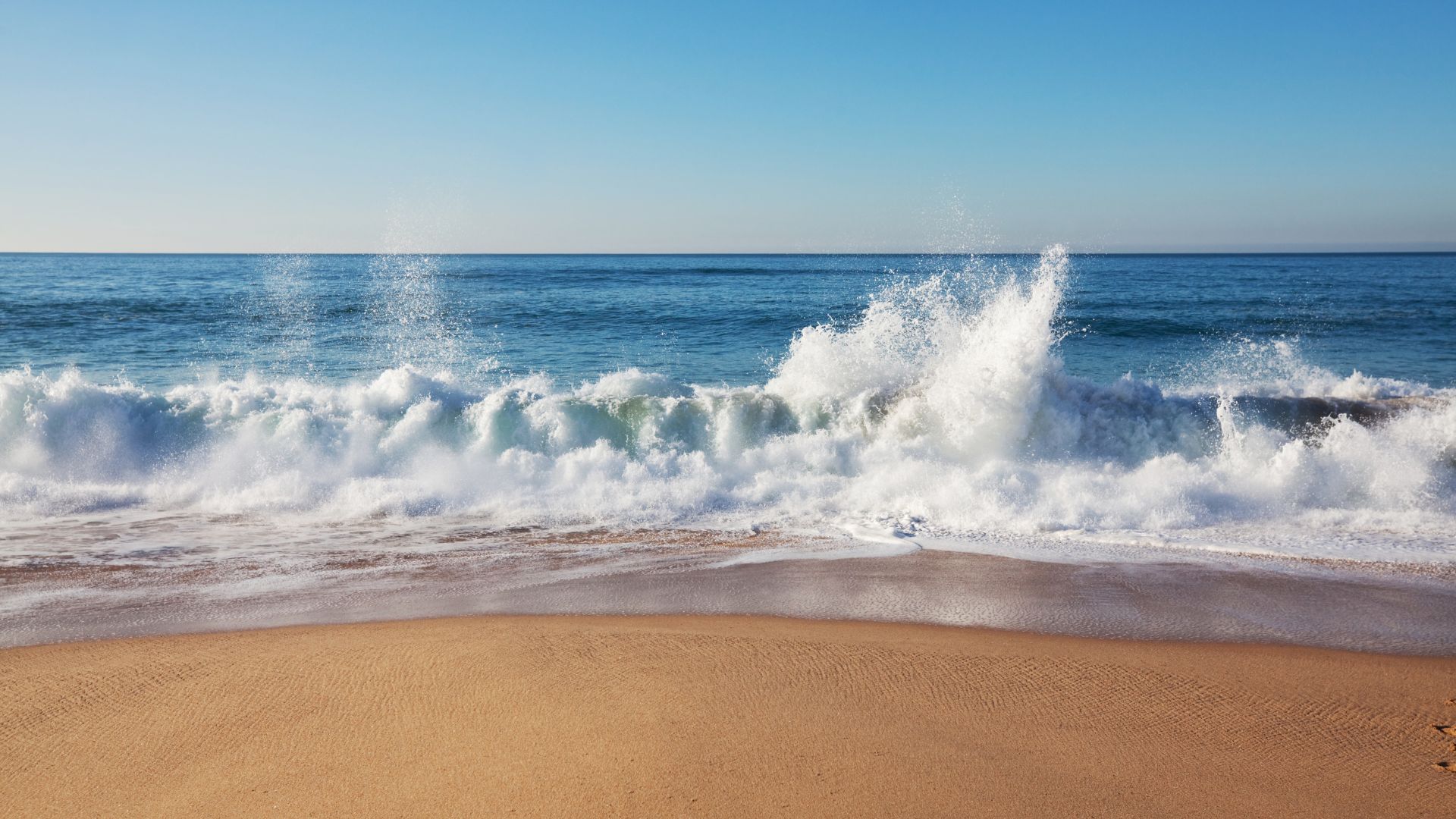You can’t see it, but anyone who has ever had a drink can affirm it: the water in the seas and oceans is salty. But, where does all this salt come from? A geochemist answers this (not so) childish question in The Conversation.
The oceans are salty for a very simple reason: there is salt in them! In one liter of seawater there are approximately 35 grams of salt. A real cooking recipe… And yet, no matter how much I look at the sea or the ocean, I don’t see anything… maybe seaweed, sand, but I don’t see any salt. But why don’t we see it? What is this salt made of? And first, where does it come from?
Sea salt comes from a mixture of two sources: mineral salts, extracted from rocks, and gases emitted by volcanoes and ridges (underwater mountain ranges). Mineral salts are chemical elements found in rocks and found in water. What is a chemical element? It is a particular type of atom. Atoms are the bricks that make up all the things around us: rocks, plants, air, animals, your parents, you too, the computer or the phone on which you read this text.
For example, limestone rocks contain three different types of chemical elements: calcium, which chemists call “Ca”, carbon “C” and oxygen “O”. Some rocks formed by the cooling of magmas (such as granites) or lava flowing from volcanoes (such as basalts), contain, among other things, an element called sodium, which chemists note as “Na”.
Gases emitted by volcanoes make rainwater acidic. This is particularly the case for carbon dioxide, CO2 which forms an acid in water called carbonic acid. So when these waters come into contact with the rocks, they attack them, they dissolve part of them.

Some experiments to do at home
You can experience it, for example in your bathroom. If you see white spots appearing on the taps or the wall of your shower, it is often limestone, as in the rocks of the same name! Pour a little vinegar on them and you will see them disappear. Carbonic acid therefore acts in the same way as vinegar on rocks, limestone, granite or basalt. We then say that the rocks are weathered. They become more fragile and lose certain elements. These elements, including sodium, calcium or magnesium, flow with rainwater to rivers and then to the ocean.
In addition, volcanoes release other gases such as chlorine, denoted “Cl”, which also accumulates in the ocean. There is therefore sodium, Na, and chlorine, Cl, in the ocean, and the combination of the two forms salt chloride “NaCl”, the salt that we eat! You can also find other elements in sea salt: such as calcium or magnesium.
Why can’t we see the salt in the sea?
But then why can’t we see it, this salt? Because in water, these elements are dissolved! You can do two experiments. First, you can make seawater at home. Take 100 milliliters of tap water. Taste there: it is not salty. Take 3.5 g of salt and put it in water, mix well. After a while, you won’t see anything. The salt crystals are dissolved, and the water has become salty.
Conversely, if you take seawater and let it evaporate, by putting it in the sun for example, you will see crystals form. You can taste them: they will be salty. It is the salt crystals, the famous NaCl, which have reformed. This process of evaporation to recover salt is what humans do in salt marshes.
Sometimes large amounts of seawater evaporate naturally and form huge amounts of salt, so huge that the salt deposits form rocks, called evaporites. For example, in Lorraine, the large salt formations come from an ocean that existed more than 200 million years ago. The salt mines, which exploit these evaporites, provide salt that can be used for food or to put on the roads in winter.


Guillaume Paris, Geochemist, CNRS researcher at the Nancy Petrographic and Geochemical Research Center, University of Lorraine
This article is republished from The Conversation under a Creative Commons license. Read the original article.
Subscribe to Numerama on Google News to not miss any news!
